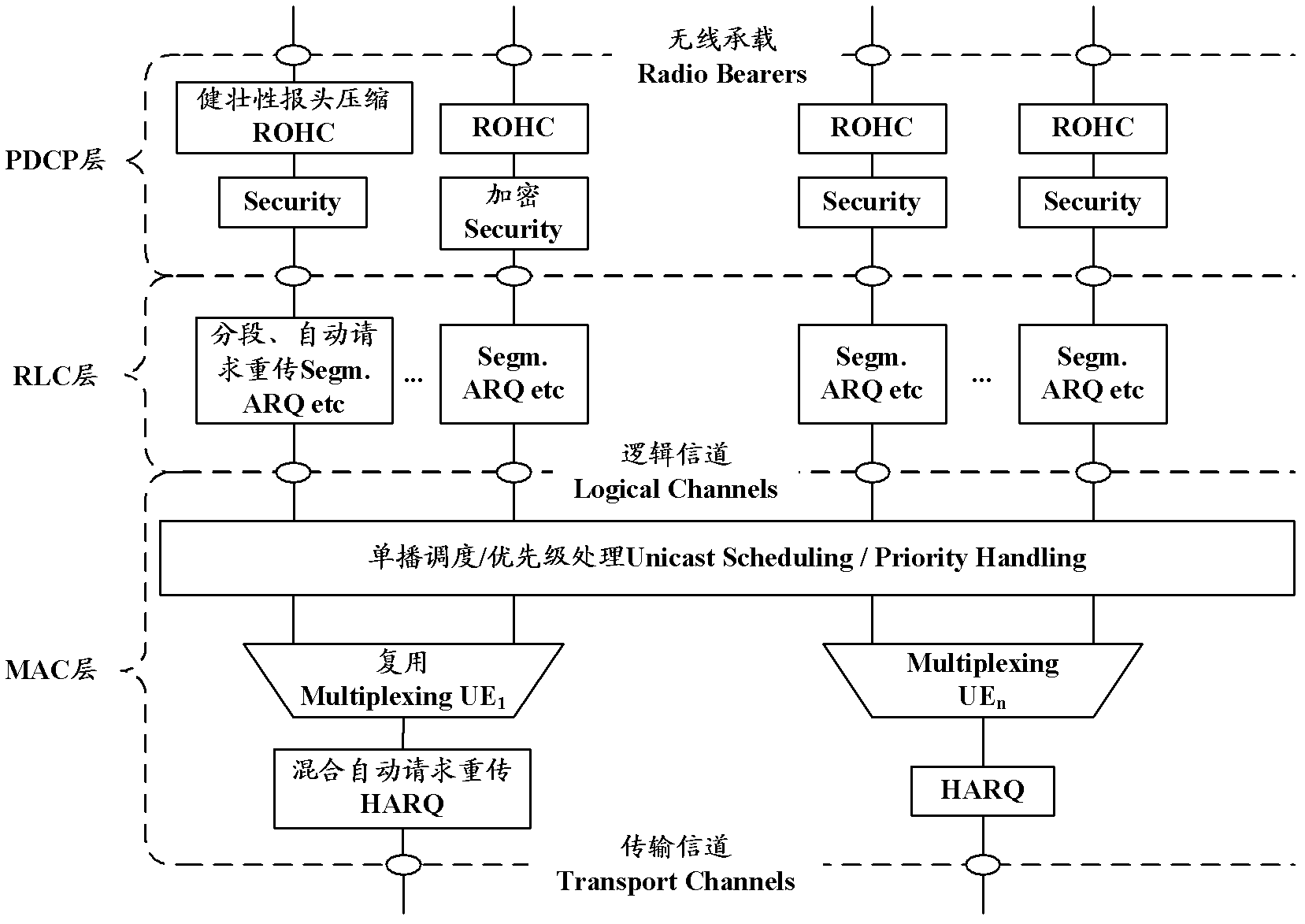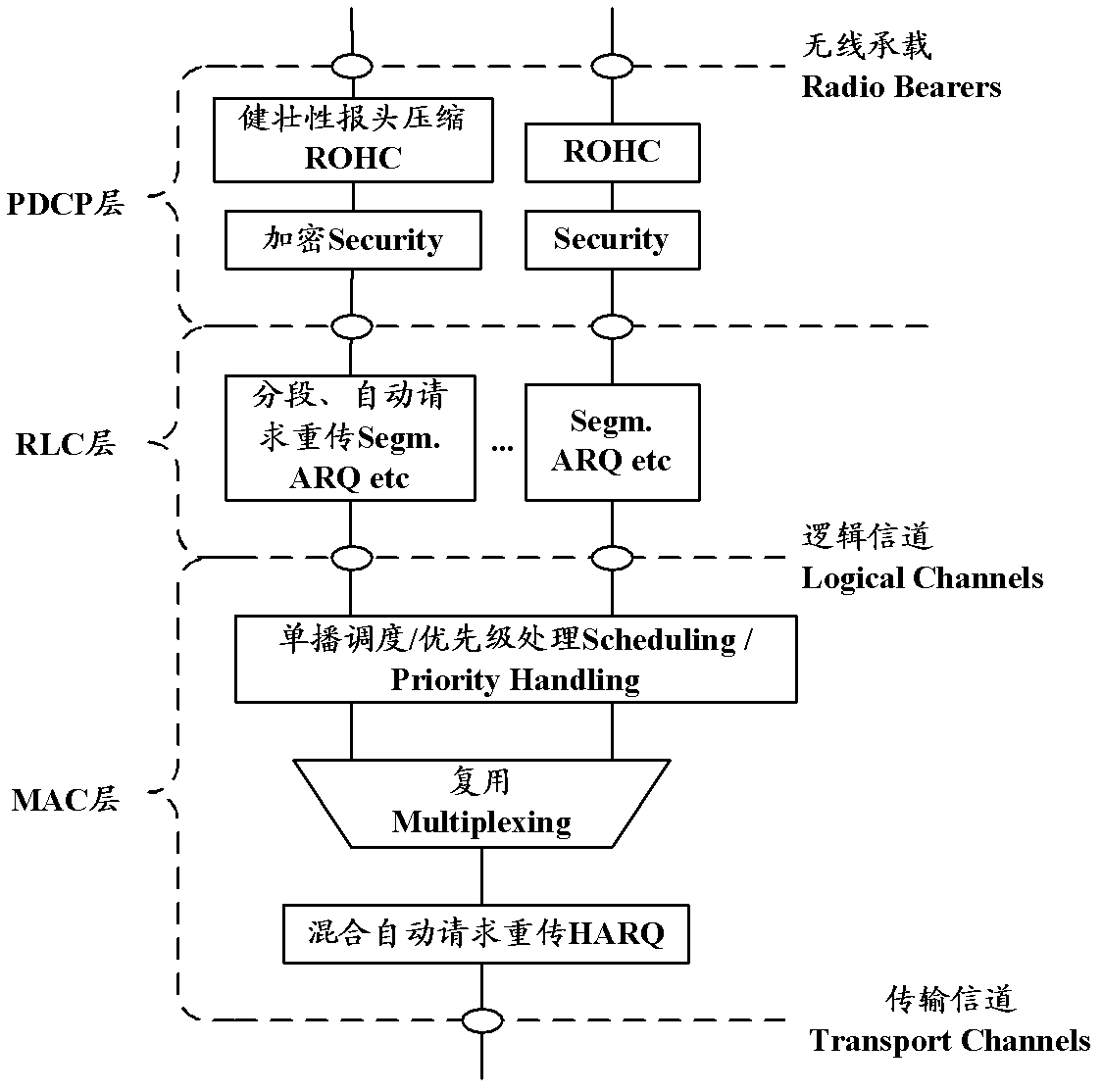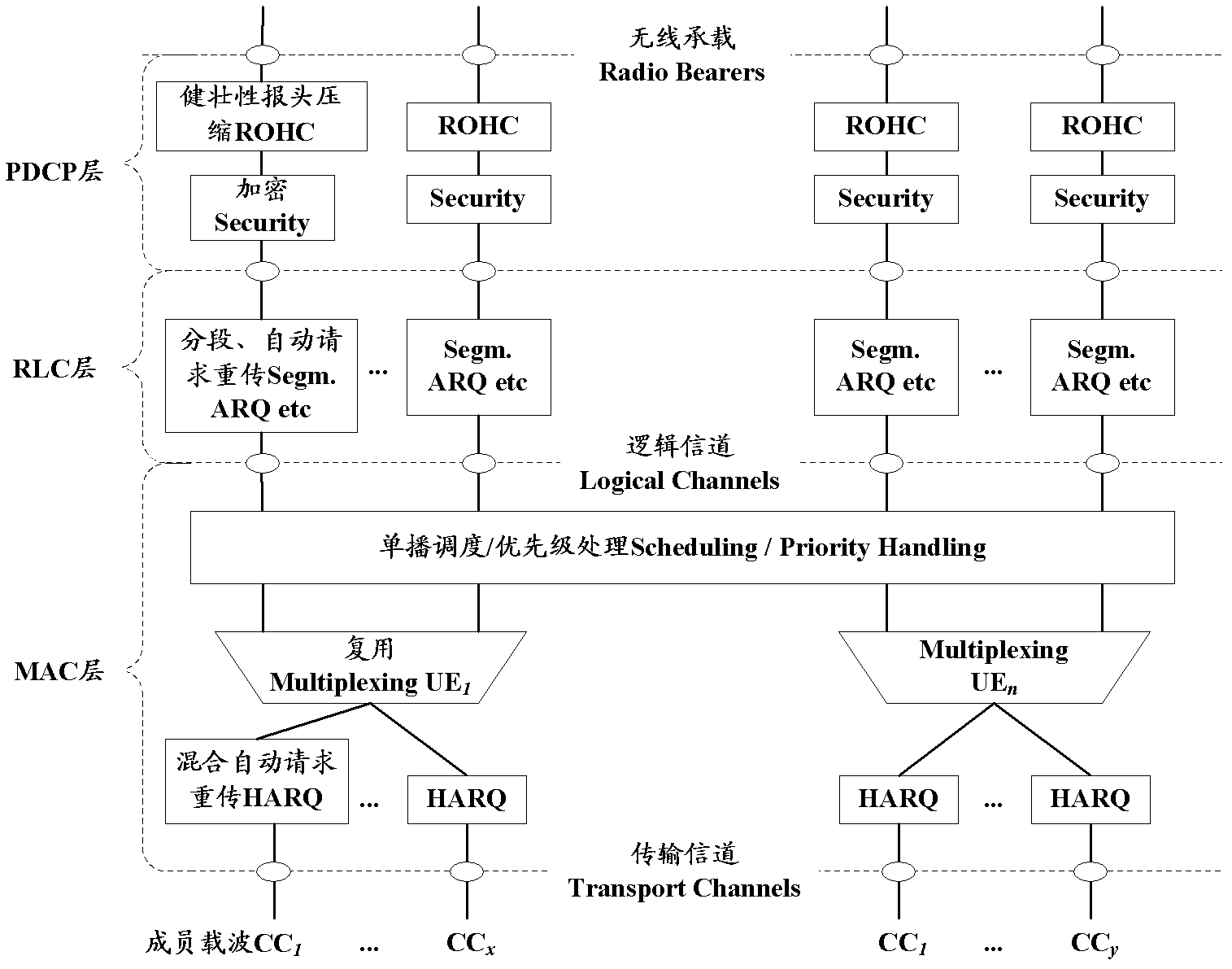Method, device and system for cascading and disassembling processing of data blocks
A processing method and data block technology, applied in the field of communication, can solve the problems of restricting the performance of LTE-A system and increasing the complexity of real-time processing of RLC layer, etc.
- Summary
- Abstract
- Description
- Claims
- Application Information
AI Technical Summary
Problems solved by technology
Method used
Image
Examples
Embodiment 1
[0056] The PDCP layer first encrypts the PDCP SDU and adds a header structure to generate a PDCP PDU, and then concatenates N PDCP PDUs to form a PDCP PDU group.
[0057] At this time, if Figure 5 As shown, in step S401, the PDCP layer performs pre-concatenation processing on the data blocks after receiving the data blocks, and sends the pre-concatenation processed data block groups to the RLC layer, which can be specifically:
[0058] Step S4011, the PDCP layer performs PDCP layer processing on the PDCP SDU to generate a PDCP PDU;
[0059] Step S4012, concatenating N PDCP PDUs to generate a PDCP PDU group;
[0060] Step S4013, sending the PDCP PDU group to the RLC layer.
[0061] After receiving the PDCP PDU group, the RLC layer can further concatenate multiple PDCP PDU groups into an RLC PDU according to the MAC instruction.
[0062] Wherein, the value of N is an integer greater than or equal to 1, which is pre-configured by a high-level layer or an algorithm.
[0063] ...
Embodiment 2
[0084] The PDCP layer first concatenates N PDCP SDUs to form a PDCP SDU group, and then encrypts the PDCP SDU group and adds a header structure to form a pre-concatenated PDCP PDU.
[0085] At this time, if Figure 8 As shown, in step S401, the PDCP layer performs pre-concatenation processing on the data blocks after receiving the data blocks, and sends the pre-concatenation processed data block groups to the RLC layer, which can be specifically:
[0086] Step S4014, the PDCP layer concatenates N PDCP SDUs to generate a PDCP SDU group;
[0087] Step S4015, performing PDCP layer processing on the PDCP SDU group to generate a pre-concatenated PDCP PDU;
[0088] Step S4016, sending the pre-concatenated PDCP PDU to the RLC layer.
[0089] After receiving the PDCP PDU group, the RLC layer can further concatenate multiple pre-concatenated PDCP PDUs into an RLC PDU according to the MAC instruction.
[0090]Wherein, the value of N is an integer greater than or equal to 1, which is ...
Embodiment 1
[0110] Corresponding to Embodiment 1, the PDCP layer 1201 is specifically used for:
[0111] The PDCP layer performs PDCP layer processing on the PDCP SDU to generate a PDCP PDU;
[0112] Concatenate N PDCP PDUs to generate a PDCP PDU group;
[0113] Send the group of PDCP PDUs to the RLC layer.
PUM
 Login to View More
Login to View More Abstract
Description
Claims
Application Information
 Login to View More
Login to View More - R&D
- Intellectual Property
- Life Sciences
- Materials
- Tech Scout
- Unparalleled Data Quality
- Higher Quality Content
- 60% Fewer Hallucinations
Browse by: Latest US Patents, China's latest patents, Technical Efficacy Thesaurus, Application Domain, Technology Topic, Popular Technical Reports.
© 2025 PatSnap. All rights reserved.Legal|Privacy policy|Modern Slavery Act Transparency Statement|Sitemap|About US| Contact US: help@patsnap.com



